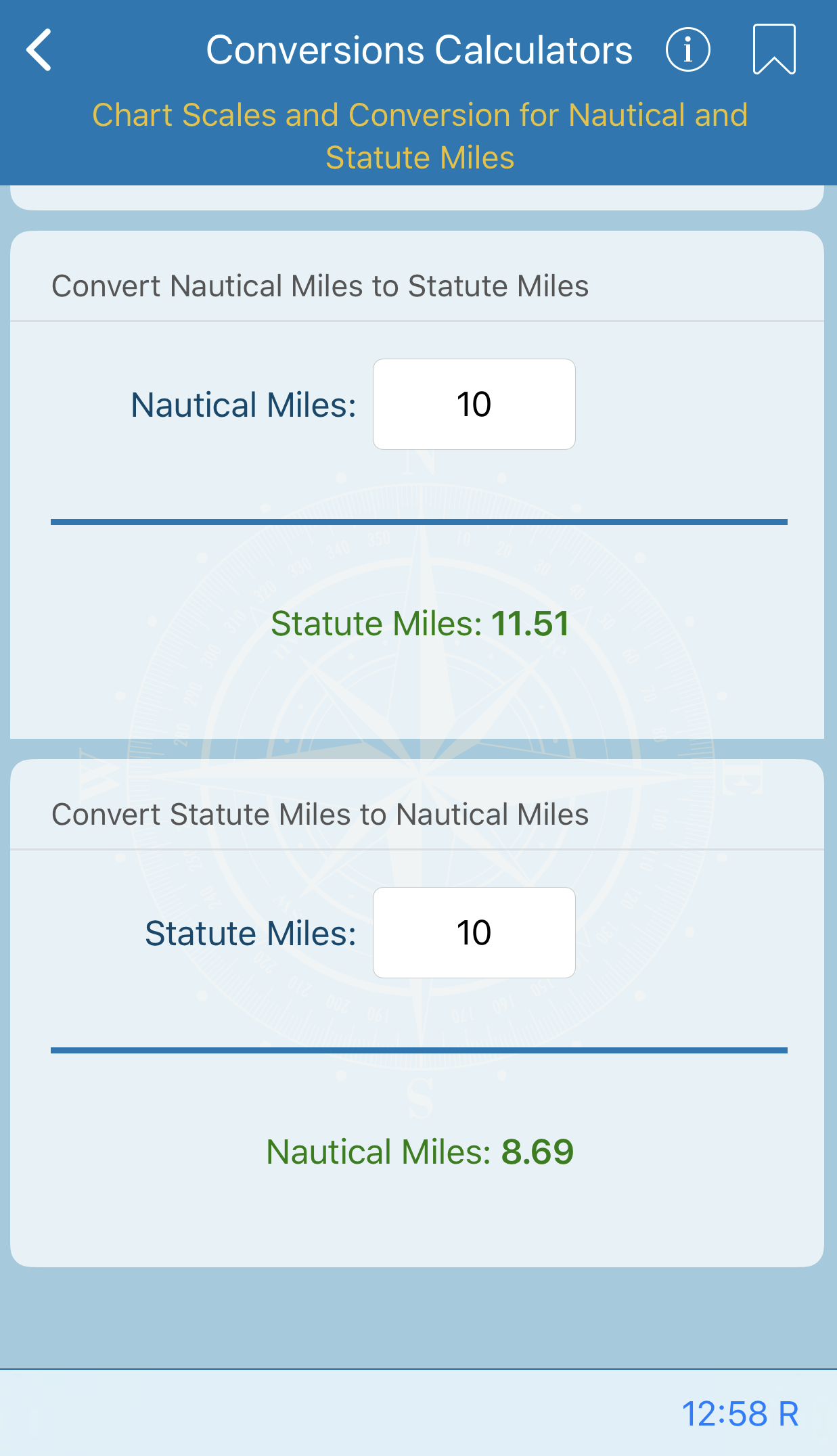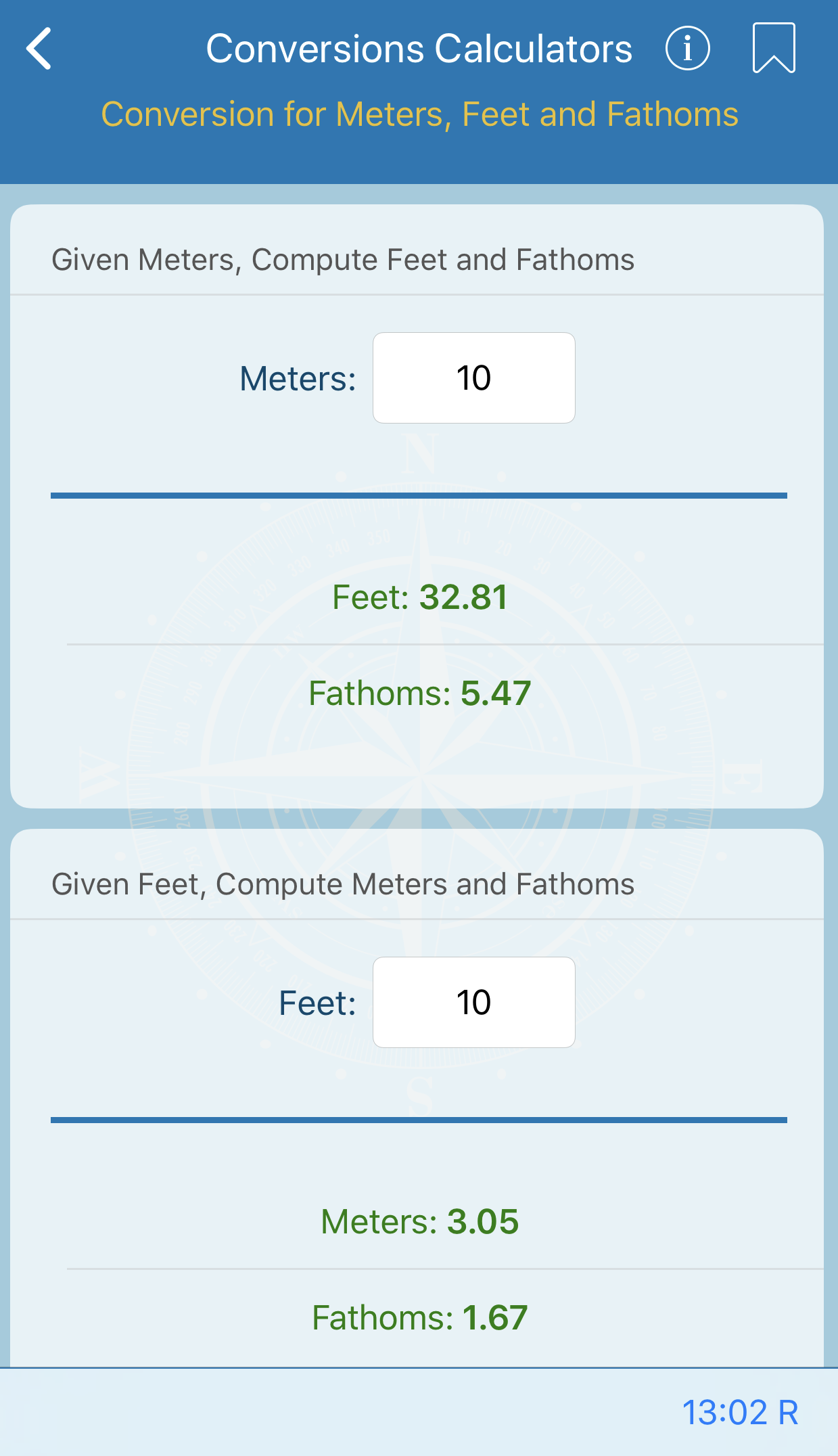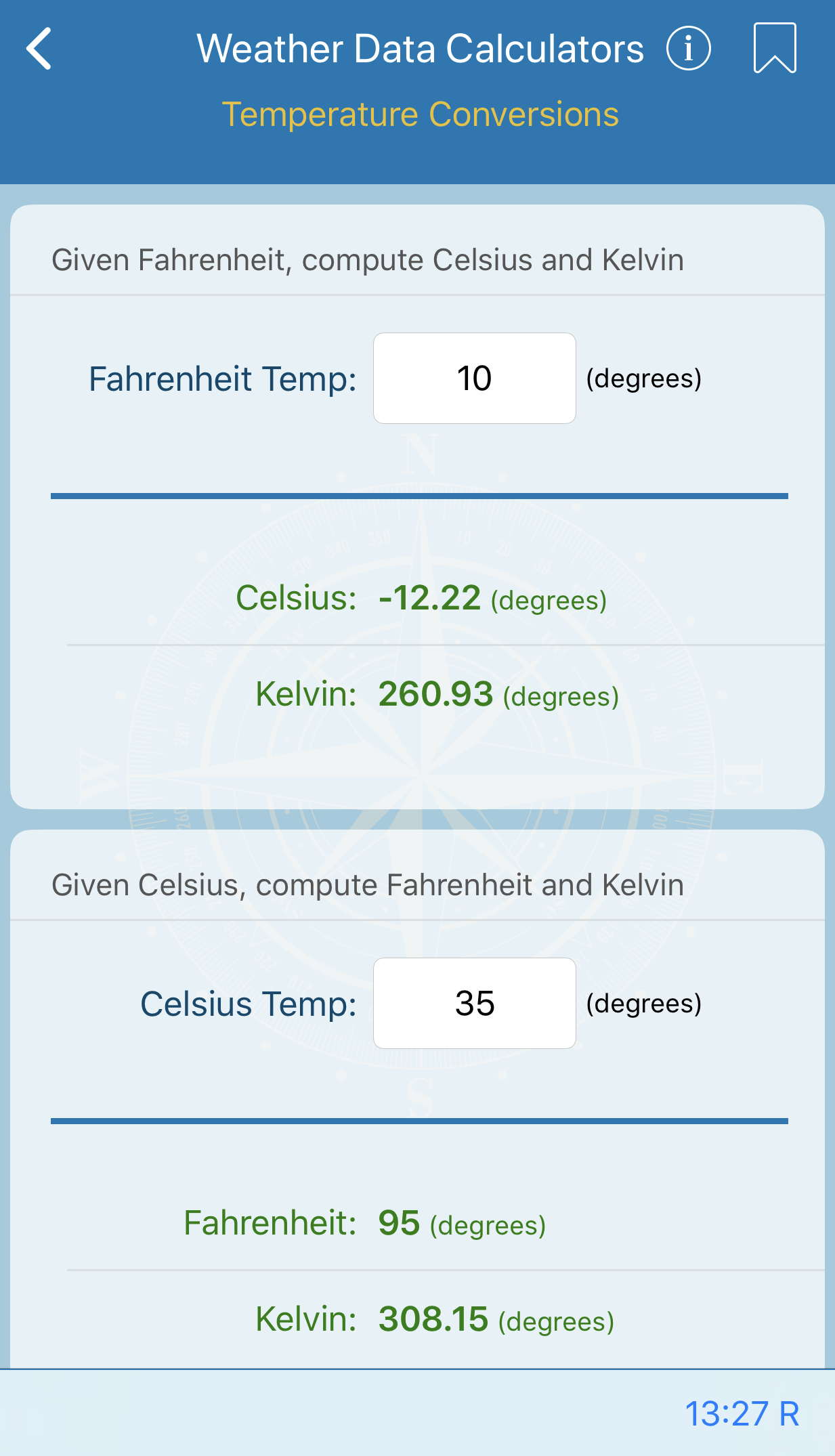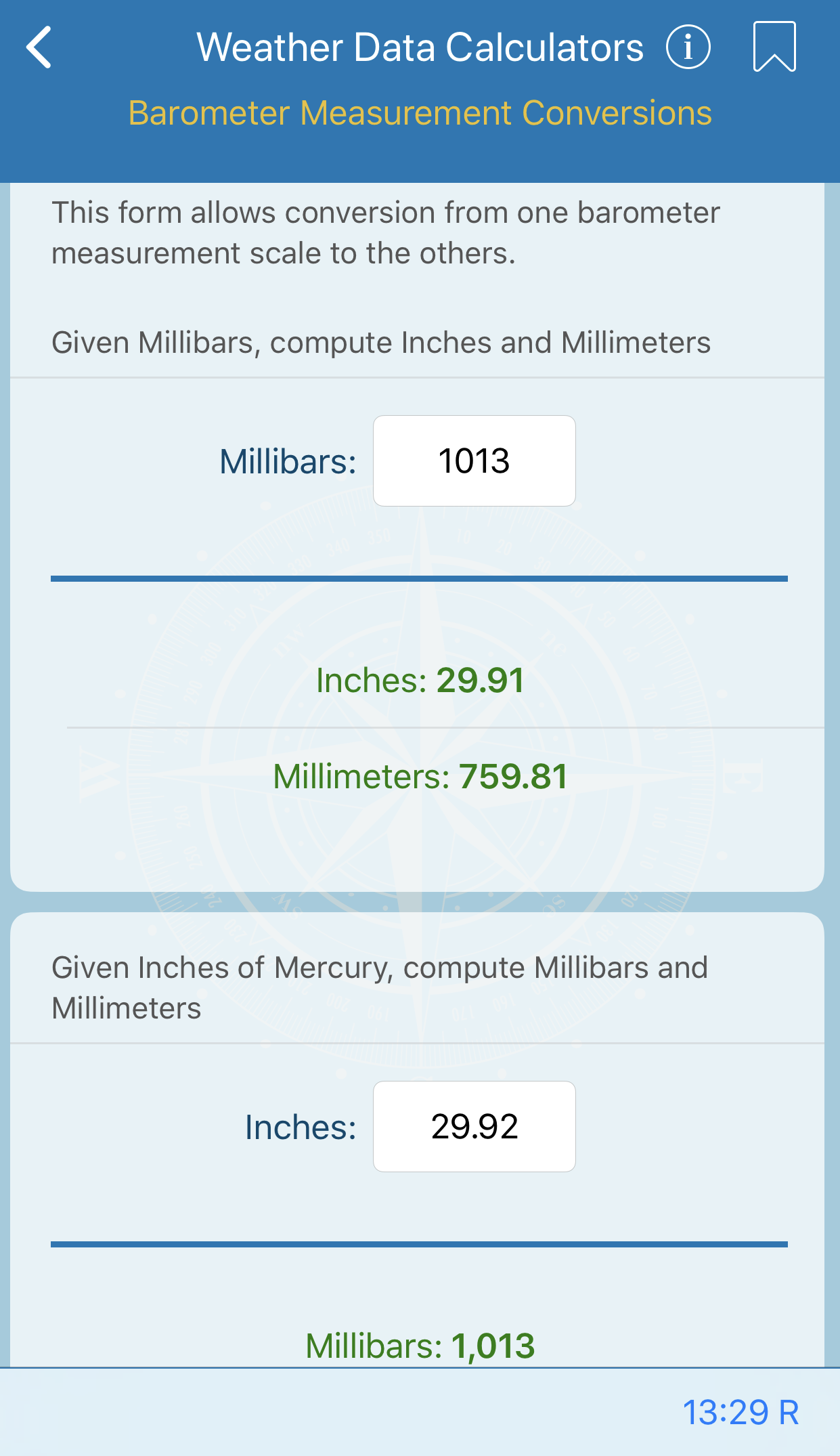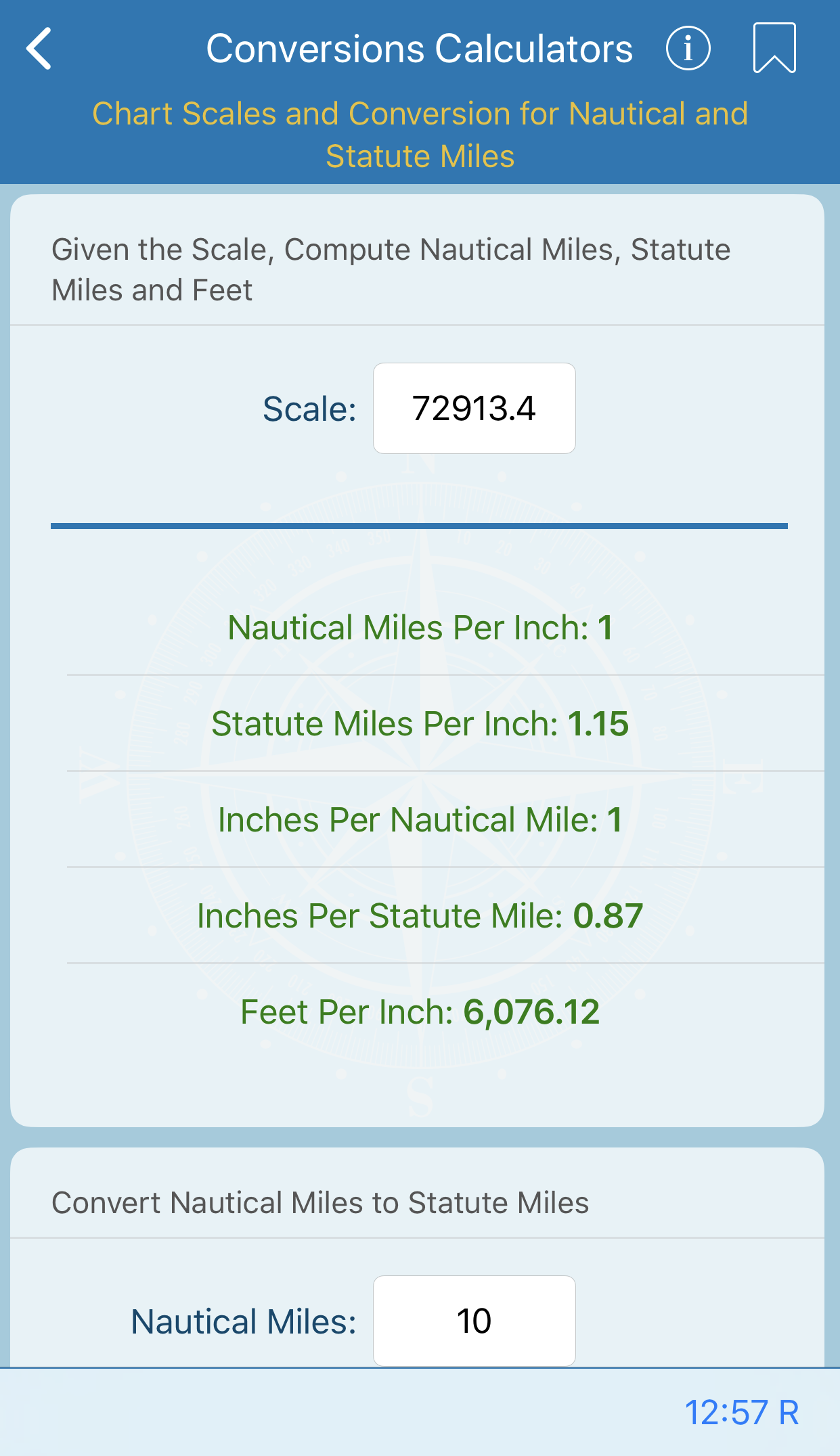
Convert Chart Scales
This table gives the numerical scale equivalents for various natural or fractional chart scales. The scale of a chart is the ratio of a given distance on the chart to the actual distance which it represents on the earth. The scale may be expressed as a simple ratio or fraction, known as the natural scale.
For example, 1:80,000 or 1/8000 - means that one unit (such as an inch) on the chart represents 80,000 of the same unit on the surface of the earth.
The scale may also be expressed as a statement of that distance on the earth shown as one unit (usually an inch) on the chart, or vice versa. This is the numerical scale.
The calculation formula was computed using 72,913.39 inches per nautical mile and 63,360 inches per statute mile.
